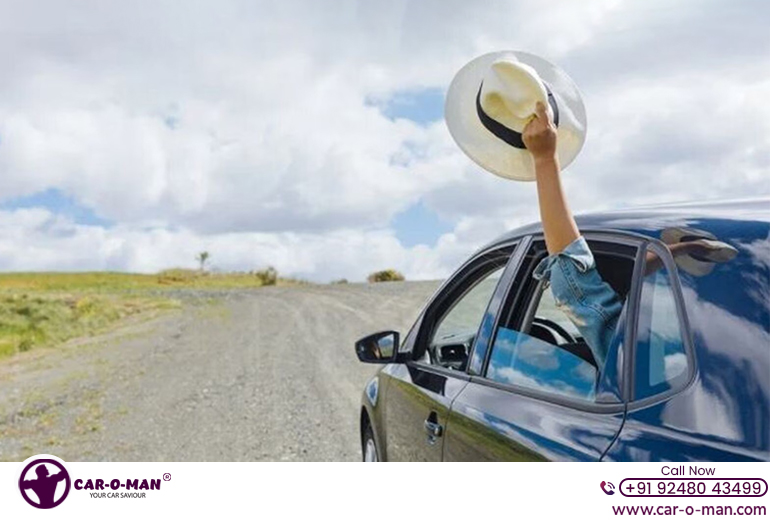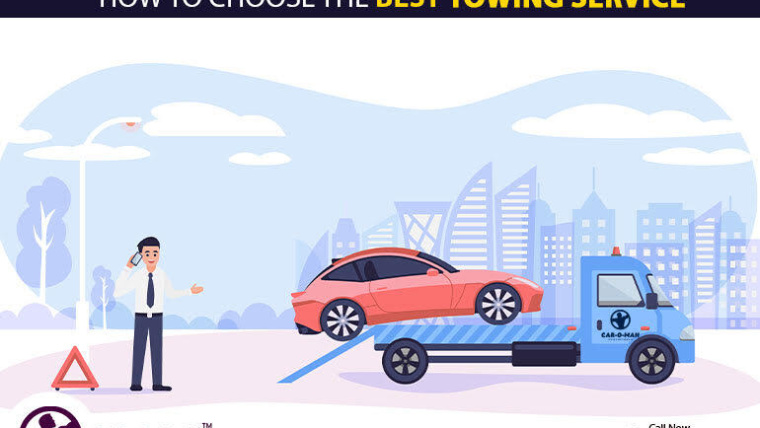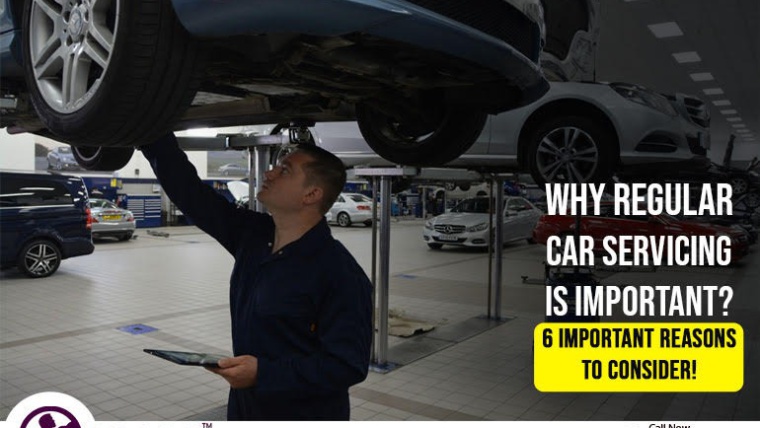Before embarking on your next road trip, ensuring your car is properly prepared is essential for a smooth journey. From the condition of your tires to the organization of your luggage, each aspect plays a crucial role in the overall success of your adventure. By taking the time to address these key areas, you can set yourself up for a stress-free and enjoyable experience on the open road. But remember, there’s one more critical factor to consider that could make all the difference in your trip’s outcome.
Inspect and Maintain Tires
Before embarking on your road trip, ensure you inspect and maintain your tires at a Multi Brand Car Service Center In Hyderabad to guarantee a safe and smooth journey. Start by checking the tire pressure using a reliable gauge. Improper pressure can affect fuel efficiency, handling, and tire wear. Consult your vehicle’s manual or the sticker inside the door jamb for the recommended pressure.
Measure the tread depth with a tread depth gauge or use a penny to check it. Having enough tread depth helps your tires grip the road well, especially when it’s wet. Look for any signs of uneven wear, which could indicate alignment issues or improper inflation.
Additionally, examine the tires for any cuts, bulges, or punctures that could lead to a blowout. Switch your tires around regularly to help them wear out evenly and last longer. Remember to tighten the lug nuts to the manufacturer’s specifications using a torque wrench.
Tires that are properly inflated, balanced, and aligned make your ride safer, more comfortable, and help save fuel.
Check Fluid Levels
Have you verified the levels of vital fluids in your vehicle before hitting the road for your upcoming adventure?
Ensuring your car’s fluids are at the correct levels is crucial for a smooth and trouble-free journey.
Start by checking the engine oil; it lubricates the engine’s moving parts, preventing wear and overheating.If you need assistance, the Best Car Repair And Service In Hyderabad can help with a detailed oil check and change.
Next, inspect the coolant level to avoid engine overheating, especially during long drives.
Brake fluid is essential for optimal braking performance, so make sure it’s within the recommended range.
Transmission fluid is responsible for smooth gear shifts, so confirm it’s adequate.
Power steering fluid is vital for effortless steering, so don’t overlook it.
Lastly, windshield washer fluid is often forgotten but it is essential for maintaining visibility during your travels.
Regularly checking and topping up these fluids will help keep your car running smoothly and efficiently, ensuring a stress-free road trip.
Ensure Brakes Are in Good Condition
Inspecting the brake system thoroughly is essential to ensure your car’s brakes are in optimal condition for your upcoming road trip. First, look at the brake fluid level in the reservoir. Low brake fluid can indicate worn brake pads or a leak in the system.
Look at the brake pads and rotors to see if they are worn out. Worn brake pads can make it harder to stop and reduce safety. Additionally, listen for any unusual noises when applying the brakes, as this could indicate issues with the brake system.
Furthermore, inspect the brake lines for any signs of damage or corrosion. Damaged brake lines can lead to brake fluid leaks and brake failure. It’s also crucial to test the brake pedal responsiveness. A spongy brake pedal or one that goes too far down when pressed may indicate air in the brake lines or a failing master cylinder.
Lastly, ensure the brake lights are working correctly to alert other drivers when you’re slowing down or stopping. Regular maintenance and thorough inspection of your brake system can help prevent potential issues during your road trip.
Test Lights and Signals
Ensure all lights and signals on your vehicle are functioning properly before embarking on your road trip. Start by checking your headlights, both high and low beams, to guarantee they illuminate correctly.
Assess the taillights, brake lights, and turn signals by having someone stand behind your vehicle while you activate each function. Don’t forget to inspect the license plate light for visibility and legality. For any replacement or upgrades, you can find reliable products among the Best Car Accessories In Hyderabad.
Make sure your hazard lights are working by checking them. Check the reverse lights to ensure they illuminate when shifting into reverse gear.
Verify that all interior lights, including the dashboard indicators and cabin lights, are in working order. Replace any burnt-out bulbs promptly.
Regularly cleaning your lights can improve their brightness and effectiveness. Properly functioning lights and signals are crucial for your safety and the safety of others on the road during your journey.
Pack Emergency Kit
You must ensure your emergency kit includes essential supplies like first aid items, a flashlight, and basic tools.
A vehicle maintenance checklist should be part of your kit to address any minor issues on the go.
Don’t forget to have emergency contact information easily accessible in case of unforeseen circumstances.
Essential Emergency Supplies
Stock your vehicle with an emergency kit containing essential supplies to ensure preparedness for any unexpected situations while on the road.
Your emergency kit should include items crucial for handling various emergencies. Firstly, pack a first aid kit with bandages, antiseptic wipes, gauze pads, and adhesive tape to address minor injuries.
Additionally, include a flashlight with extra batteries to provide illumination during nighttime emergencies or when checking the vehicle in the dark.
A multipurpose tool or Swiss army knife can be invaluable for minor repairs or tasks.
Non-perishable snacks and water bottles are essential for sustenance during unexpected delays.
A reflective warning triangle can enhance visibility and safety if your car breaks down.
Don’t forget to pack a blanket or extra clothing to stay warm in case of cold weather.
Lastly, keep a fully charged power bank for your phone to ensure you can call for help if needed.
Vehicle Maintenance Checklist
Pack your vehicle’s emergency kit with essential supplies to ensure preparedness for unexpected situations while on the road. Your kit should include items like jumper cables, a flashlight with extra batteries, a basic toolkit with screwdrivers and pliers, a tire pressure gauge, and a tire repair kit. Additionally, carrying a reflective warning triangle and a high-visibility vest can enhance safety in case of a breakdown.
It’s crucial to have a first aid kit stocked with bandages, antiseptic wipes, pain relievers, and any necessary medications. Include non-perishable food items like energy bars and water to stay nourished during unforeseen delays. A portable phone charger is indispensable for keeping your devices powered up in emergencies.
Don’t forget to pack blankets, gloves, and extra clothing for warmth if you find yourself stranded in cold weather. Lastly, a paper map or a printed list of directions can be a lifesaver if you lose GPS signal.
Being well-prepared with a comprehensive emergency kit can make all the difference during your road trip.
Emergency Contact Information
Include a list of emergency contacts in your vehicle’s emergency kit to ensure you have vital information readily available in case of unforeseen circumstances on your road trip.
When preparing your emergency contact list, make sure to include names, phone numbers, and any specific medical or insurance information that may be crucial in an emergency. It’s advisable to have at least two emergency contacts listed, such as a family member or close friend who can be reached quickly.
Consider adding contacts like roadside assistance services and your insurance provider to the list for easy access.
Organize this information in a waterproof container or a sealed plastic bag within your emergency kit to prevent damage. Additionally, ensure that all passengers in the vehicle are aware of where this information is stored.
Regularly review and update these contacts before each trip to guarantee that the information remains current and accurate.
Having this essential information readily available can make a significant difference in emergency situations, providing peace of mind as you embark on your road trip.
Clean Interior and Exterior
To ensure your car is in top condition for your upcoming road trip, paying attention to both the interior and exterior cleanliness is crucial.
Interior detailing tips will help you remove dirt and grime from hard-to-reach areas, ensuring a comfortable and hygienic environment for your journey.
Additionally, exterior washing essentials and proper maintenance of car surfaces won’t only enhance the aesthetic appeal but also protect your vehicle from potential damage during the trip.
Interior Detailing Tips
Before embarking on your road trip adventure, ensure your car’s interior and exterior are in pristine condition by following these interior detailing tips.
Start by thoroughly vacuuming the interior, including the seats, carpets, and floor mats, to remove any dirt, crumbs, or debris. Use a soft brush attachment to clean hard-to-reach areas like vents and crevices.
Next, wipe down all surfaces with a microfiber cloth and a mild interior cleaner to remove dust, fingerprints, and stains. Pay special attention to areas frequently touched, such as the steering wheel, gear shift, and door handles.
Condition leather seats regularly to keep them soft and prevent them from cracking. For fabric seats, consider using a fabric protector spray to repel spills and stains.
Don’t forget to clean the windows inside and out for a clear view while driving. Finally, freshen up the interior by using a car air freshener of your choice.
Exterior Washing Essentials
Ensure the exterior of your car is spotless and well-prepared for your road trip by following these essential washing guidelines to clean both the interior and exterior thoroughly. Start by gathering the necessary supplies: a bucket, car wash soap, microfiber towels, and a hose.
Start by washing your car to get rid of loose dirt and debris. Next, apply the car wash soap using a sponge or wash mitt, starting from the top and working your way down. Be sure to focus on areas prone to buildup like the front grille and wheels. Rinse off all the soap well to avoid streaks and water spots.
Dry your car with a clean microfiber towel, starting from the top and moving down to avoid watermarks. Finally, apply a coat of wax to protect your car’s paint and add a glossy finish. By following these steps, your car will be shining and ready for your upcoming road trip adventure.
Maintenance of Car Surfaces
Clean and maintain both the interior and exterior surfaces of your car regularly to uphold its appearance and longevity.
The interior of your car can benefit from regular vacuuming to remove dust, debris, and food particles that can accumulate over time. Use a microfiber cloth and a gentle cleaner to wipe down surfaces like the dashboard, seats, and door panels to prevent the buildup of dirt and grime.
For the exterior, washing your car regularly can help preserve its paint and prevent rust. Use a pH-balanced car shampoo and a soft sponge to wash the exterior, focusing on areas prone to dirt buildup like the wheels and lower panels. Don’t forget to dry your car thoroughly with a microfiber towel to prevent water spots.
Applying a coat of wax every few months can protect the paint from UV rays and environmental contaminants. By maintaining both the interior and exterior surfaces of your car, you can ensure a clean and well-kept vehicle for all your road trip adventures.
Organize Luggage and Supplies
To maximize space and efficiency for your upcoming road trip, carefully pack and arrange your luggage and supplies in a strategic manner within your vehicle. Begin by sorting your essentials into categories such as clothing, toiletries, electronics, and snacks. Utilize travel organizers, packing cubes, or vacuum-sealed bags to optimize space and keep items organized.
When loading your vehicle, distribute weight evenly to maintain balance and stability during the drive. Place heavier items at the bottom and lighter items on top to prevent shifting while in motion. Secure loose items to prevent them from becoming projectiles in the event of sudden stops.
Consider the accessibility of items you may need during the journey and pack them in easily reachable locations. Keep frequently used items such as snacks, water, maps, and chargers within arm’s reach.
Additionally, store important documents like your driver’s license, registration, and insurance information in a designated and secure spot for quick access when needed.
Plan Route and Stops
When planning your route and stops for the road trip, start by mapping out the most efficient path to your destination, considering factors such as distance, road conditions, and potential traffic congestion.
Utilize GPS navigation apps or websites to plot your course, taking into account any construction zones or detours that may affect travel time.
Plan for rest stops every 2-3 hours to stretch your legs and prevent fatigue.
Research and mark interesting landmarks, scenic viewpoints, or local attractions along the way to enhance your journey.
Make note of gas stations, restaurants, and accommodations at strategic points to ensure a smooth travel experience.
Consider alternate routes in case of unexpected road closures or heavy traffic.
Be prepared with a physical map as a backup in areas with poor signal reception.
Consider Vehicle Safety Features
Take into account the safety features of your vehicle before embarking on your road trip to ensure a secure and smooth journey ahead.
Begin by checking your vehicle’s airbags, ensuring they’re in optimal condition and haven’t been tampered with.
Next, inspect the anti-lock braking system (ABS) to guarantee it’s functioning correctly; this system prevents wheels from locking up during sudden braking, enhancing control.
Verify that your car’s traction control system is operational, aiding in maintaining stability on slippery roads.
Assess the tire pressure and tread depth, as well as the condition of the spare tire, to prevent blowouts.
Additionally, confirm that your vehicle’s electronic stability control (ESC) is working to assist in avoiding skidding or loss of control during evasive maneuvers.
Lastly, ensure that all seat belts are functional, and consider installing a car seat if traveling with young passengers.
By following the steps outlined in this article, you can effectively prepare your car for the perfect road trip.
Ensuring your tires, fluids, brakes, lights, and emergency kit are in top condition, as well as cleaning and organizing your vehicle, will contribute to a safe and enjoyable journey.
Remember to plan your route and stops in advance, and consider utilizing your vehicle’s safety features for added peace of mind on the road.


